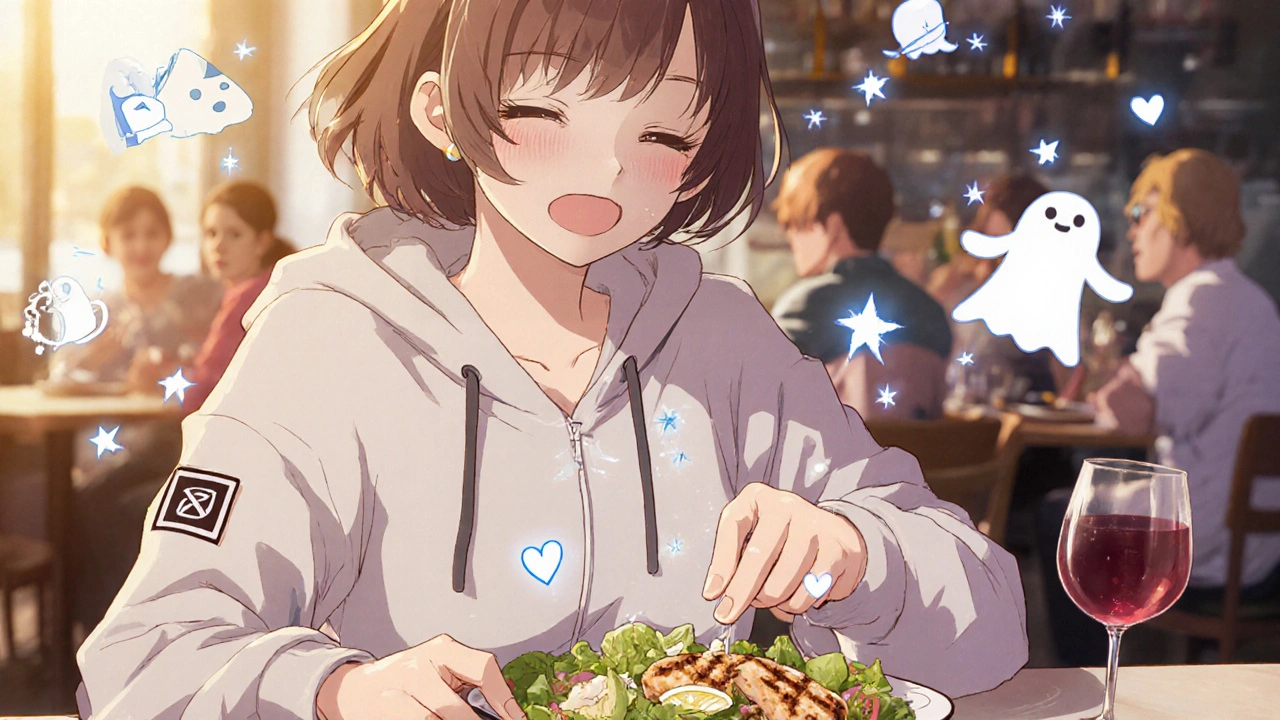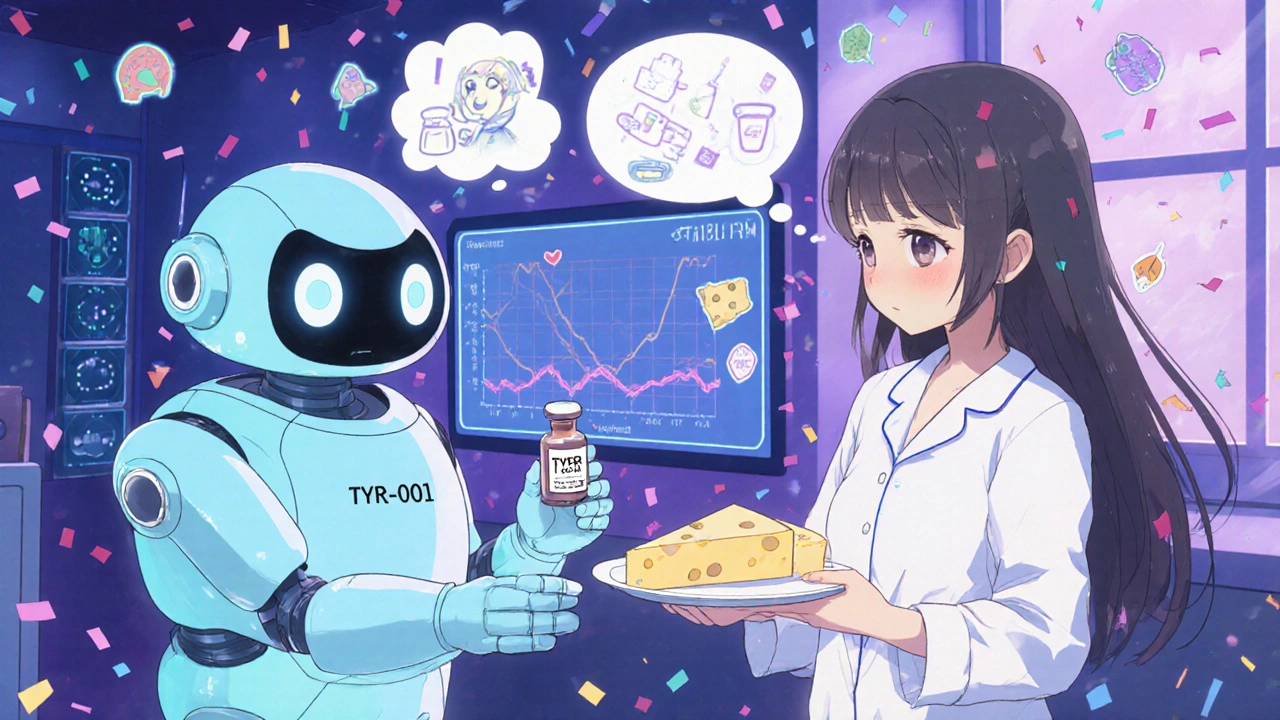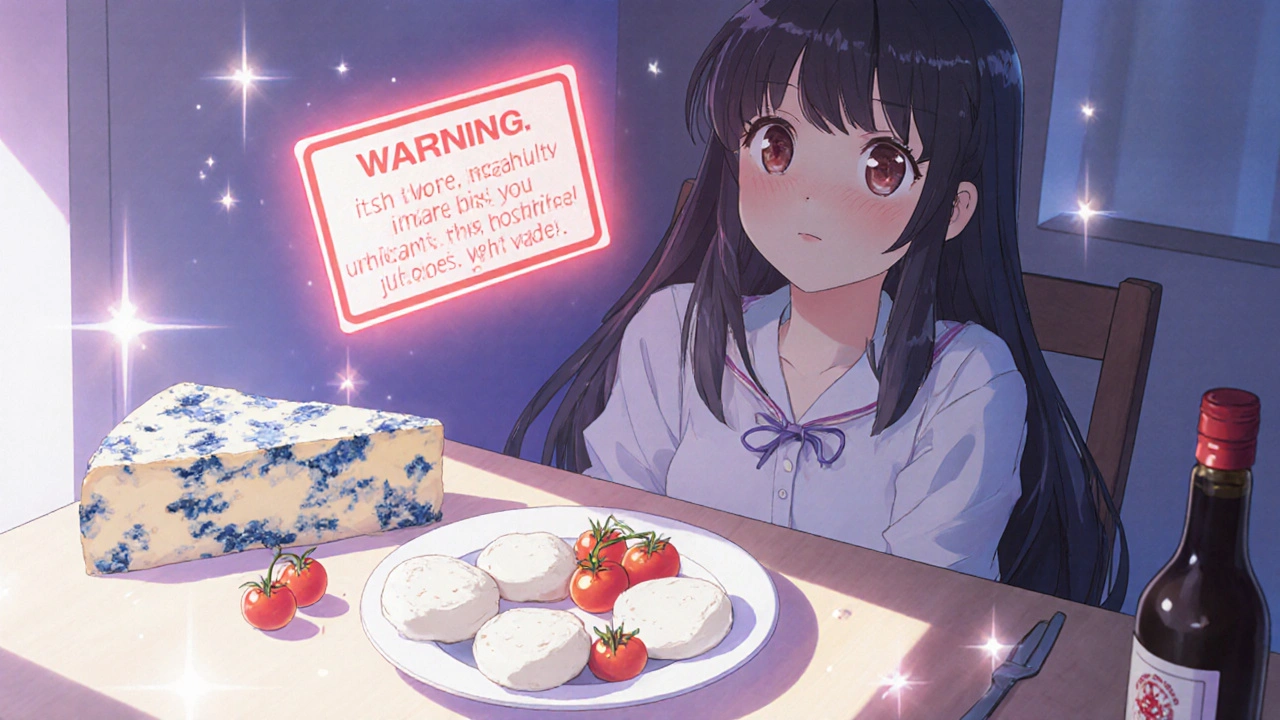Why Eating Cheese Could Be Dangerous on Certain Antidepressants
If you're taking an MAO inhibitor for depression, a simple slice of aged cheddar or a spoonful of soy sauce could trigger a sudden, life-threatening spike in blood pressure. This isn't a myth or an old wives' tale-it's a well-documented medical risk called a hypertensive crisis. While these medications can be life-changing for people who haven't responded to other treatments, they come with a strict, often overlooked dietary rule: avoid foods high in tyramine.
MAO inhibitors, or MAOIs, work by blocking the enzyme monoamine oxidase, which normally breaks down chemicals like serotonin, dopamine, and tyramine in your body. When this enzyme is shut down, tyramine from food builds up fast. That excess tyramine forces your body to release a flood of norepinephrine, causing blood vessels to constrict and blood pressure to skyrocket. In minutes, you could go from feeling fine to having a pounding headache, blurred vision, chest pain, or even a stroke.
What Exactly Is Tyramine-and Why Does It Matter?
Tyramine is a naturally occurring compound that forms when proteins in food break down over time. It’s not toxic on its own. In fact, your body handles it just fine if your liver and gut enzyme (MAO-A) is working normally. But when you’re on a traditional MAOI like phenelzine (Nardil) or tranylcypromine (Parnate), that enzyme is blocked. Suddenly, even small amounts of tyramine can trigger dangerous reactions.
Research shows that as little as 5-10 mg of tyramine can cause a noticeable spike in blood pressure for someone on an MAOI. At 10-25 mg, the risk of a full hypertensive crisis becomes real. That’s not a lot. A single ounce of blue cheese can contain up to 41 mg. A cup of soy sauce? Up to 70 mg. A serving of pickled herring? Over 100 mg. And these numbers aren’t guesses-they come from the USDA Food Composition Database and peer-reviewed studies published in the Journal of Clinical Psychopharmacology and StatPearls.
Foods That Can Trigger a Crisis
Not all aged or fermented foods are equally risky, but some are dangerous enough to warrant strict avoidance. Here’s what to steer clear of:
- Aged cheeses: Blue cheese, cheddar, Swiss, parmesan, brie, camembert, gouda, and feta. Fresh cheeses like mozzarella, ricotta, cottage cheese, and cream cheese are safe.
- Cured or processed meats: Pepperoni, salami, summer sausage, pastrami, corned beef, and liverwurst. Fresh, unaged meats are fine.
- Fermented soy products: Soy sauce, teriyaki sauce, miso, tempeh, and fermented tofu. Tamari and coconut aminos are safer alternatives.
- Pickled or fermented fish: Pickled herring, anchovies, and smoked fish like lox. Fresh fish is okay.
- Alcohol: Tap beer, homebrewed beer, red wine (especially Chianti), and liqueurs. White wine and most distilled spirits (vodka, gin, whiskey) in small amounts are generally acceptable.
- Overripe or spoiled foods: Any fruit or vegetable that’s past its prime-bananas with brown spots, avocados that are mushy, or leftovers sitting too long. Tyramine forms as food spoils.
Here’s a quick reference: if a food has been aged, fermented, pickled, smoked, or stored for weeks, assume it’s risky. Fresh is always safer.

Not All MAOIs Are the Same
Many people assume all MAOIs require the same strict diet-but that’s not true. The risk depends on the type of MAOI you’re taking.
- Traditional MAOIs (phenelzine, tranylcypromine, isocarboxazid): These are irreversible and non-selective. They block MAO-A in your gut and liver completely. You must follow the full diet restrictions: under 15 mg of tyramine per day.
- Transdermal selegiline (Emsam patch): At the lowest dose (6 mg/24 hours), it only affects MAO-B in the brain and leaves gut MAO-A untouched. That means no dietary restrictions at this dose. Higher doses (9 mg and 12 mg) require limited restrictions-avoid only foods with over 100 mg of tyramine per serving.
- Reversible MAO-A inhibitors (RIMAs) like moclobemide: These aren’t available in the U.S., but in Europe, they’re used widely because tyramine can still displace them from the enzyme, making dangerous buildups unlikely. Even at doses of 100 mg tyramine, no crisis has been reported.
If you’re on Emsam at 6 mg, you can eat most foods without worry. If you’re on Nardil or Parnate, you need to be much more careful. Always confirm your exact medication and dose with your prescriber.
What Happens If You Accidentally Eat Something Risky?
Most people who accidentally eat high-tyramine foods don’t have a full-blown crisis. But symptoms can show up fast-within 15 to 30 minutes. Watch for:
- Severe headache, especially at the back of the head (occipital headache)
- Palpitations or racing heart
- Sweating, flushing, or chills
- Nausea or vomiting
- Blurred vision or chest tightness
- Systolic blood pressure over 180 mmHg
A 2023 Reddit survey of 412 MAOI users found that 74% had accidentally eaten a high-tyramine food at least once. About 18% had mild symptoms like headaches or flushing. Only 2% needed emergency care. That’s reassuring-but it doesn’t mean you should take chances.
If you feel any of these symptoms, sit down, stay calm, and check your blood pressure if you have a home monitor. Call your doctor or go to the ER if your systolic pressure is above 180 or if you have chest pain, confusion, or trouble breathing. Emergency treatment now uses nicardipine to slowly lower pressure-older methods that drop it too fast can cause strokes.
How to Stay Safe Without Feeling Deprived
The biggest complaint from people on MAOIs? Social isolation. One study found that 82% of those who quit their medication did so because they couldn’t handle the diet restrictions.
But you don’t have to live in fear. Here’s how to make it manageable:
- Use a food list, not guesses: Don’t rely on “I think this is okay.” Use a printed or digital list from your doctor or the Massachusetts General Hospital protocol. It’s more reliable than memory.
- Portion size matters: A small piece of aged cheese (under 1 ounce) might be safe for some people, but two ounces? Not worth the risk.
- Check labels: Since 2022, the FDA requires tyramine content to be listed on cheese packaging if it exceeds 10 mg per serving. Look for it.
- Keep a food diary: Track what you eat and how you feel. Over time, you’ll spot patterns.
- Plan ahead: If you’re going out to eat, call the restaurant. Ask if they use aged cheese, soy sauce, or cured meats. Most are happy to accommodate.
And remember: fresh foods are your friend. A grilled chicken salad with fresh veggies, olive oil, and lemon juice? Perfect. A bowl of fresh fruit? Safe. A new carton of milk? No problem. You’re not giving up food-you’re choosing smarter options.

What’s Changing in the Future?
The landscape is shifting. In March 2024, the FDA granted breakthrough status to a new enzyme supplement called TYR-001, developed by Sage Therapeutics. In early trials, it allowed people on MAOIs to eat tyramine-rich foods without any blood pressure spikes-even at doses up to 50 mg. If Phase III trials succeed, this could revolutionize treatment by removing the biggest barrier to using these powerful antidepressants.
Meanwhile, the Emsam patch is already gaining traction. In 2023, it made up 65% of all new MAOI prescriptions because patients can eat normally at the lowest dose. The American Psychiatric Nurses Association now recommends all MAOI patients keep a home blood pressure monitor with automatic logging. That way, your doctor can see trends and catch warning signs before they become emergencies.
MAOIs won’t replace SSRIs or SNRIs. But for people with treatment-resistant depression, they’re often the last option that works. And now, with better tools, better education, and new therapies on the horizon, staying safe doesn’t mean giving up your life-it means living it more fully, with awareness and confidence.
When to Talk to Your Doctor
Don’t wait until you feel bad. Talk to your prescriber if:
- You’re unsure whether a food is safe
- You’ve had a headache or rapid heartbeat after eating something
- You’re thinking about stopping your medication because of the diet
- You want to know if you can switch to Emsam or another MAOI with fewer restrictions
Your doctor can help you weigh the risks and benefits. For many, the trade-off is worth it. One 2022 study found that 61% of people on MAOIs for two or more years said their depression improved so dramatically, it was life-changing-even with the diet.
Can I drink wine on MAOIs?
Avoid red wine, especially Chianti, which can contain 4-15 mg of tyramine per 100 ml. Tap beer and homebrewed beer are also risky. White wine and small amounts of distilled spirits like vodka or gin are usually safe, but check with your doctor. Never mix alcohol with MAOIs without approval.
Is aged cheese always dangerous?
Yes, if you’re on a traditional MAOI like Nardil or Parnate. Blue cheese can have up to 41 mg of tyramine per 100 grams. Even a small slice can push you over the danger threshold. Fresh cheeses like mozzarella, ricotta, cottage cheese, and cream cheese are safe. Always check the label-if it says "aged," avoid it.
Can I eat soy sauce on MAOIs?
Regular soy sauce contains 20-70 mg of tyramine per 100 ml-far too high for MAOI users. Tamari and coconut aminos are safer alternatives with minimal tyramine. Always read labels and avoid any fermented soy products unless confirmed low in tyramine.
What should I do if I accidentally eat high-tyramine food?
Stay calm. Sit down and check your blood pressure if you have a monitor. Watch for symptoms like severe headache, rapid heartbeat, or chest tightness. If your systolic pressure is over 180 mmHg or you feel unwell, call your doctor or go to the ER. Don’t wait. Early intervention prevents serious complications.
Are there MAOIs that don’t require diet restrictions?
Yes. The transdermal selegiline patch (Emsam) at the 6 mg/24 hour dose doesn’t require dietary changes because it doesn’t block the enzyme in your gut. Higher doses (9 mg and 12 mg) have limited restrictions. RIMAs like moclobemide (not available in the U.S.) also have much lower risk. Talk to your doctor about switching if diet restrictions are too hard to follow.
How long do I need to follow the diet?
As long as you’re taking the MAOI. Even after stopping, you must wait at least two weeks before eating high-tyramine foods because the enzyme takes time to regenerate. Some doctors recommend waiting up to four weeks for full safety, especially with irreversible MAOIs. Always follow your prescriber’s instructions.
Final Thoughts: It’s Not About Fear-It’s About Control
The idea of avoiding cheese, wine, and soy sauce might sound overwhelming. But this isn’t about deprivation. It’s about knowing what’s safe and what’s not. You’re not giving up your favorite foods-you’re learning how to enjoy them safely. With the right information, tools like home blood pressure monitors, and new treatments on the horizon, you can take control of your mental health without putting your physical health at risk. The goal isn’t perfection. It’s awareness. And with that, you can live well-even on an MAOI.

Tom Shepherd
November 27, 2025 AT 05:14Jauregui Goudy
November 28, 2025 AT 19:52Aishwarya Sivaraj
November 29, 2025 AT 01:23Rhiana Grob
November 29, 2025 AT 05:08Iives Perl
November 29, 2025 AT 14:04sharicka holloway
November 30, 2025 AT 15:16Savakrit Singh
December 2, 2025 AT 02:41Emma louise
December 2, 2025 AT 05:32Jebari Lewis
December 3, 2025 AT 12:25Rebecca Price
December 4, 2025 AT 22:29steve stofelano, jr.
December 5, 2025 AT 05:33